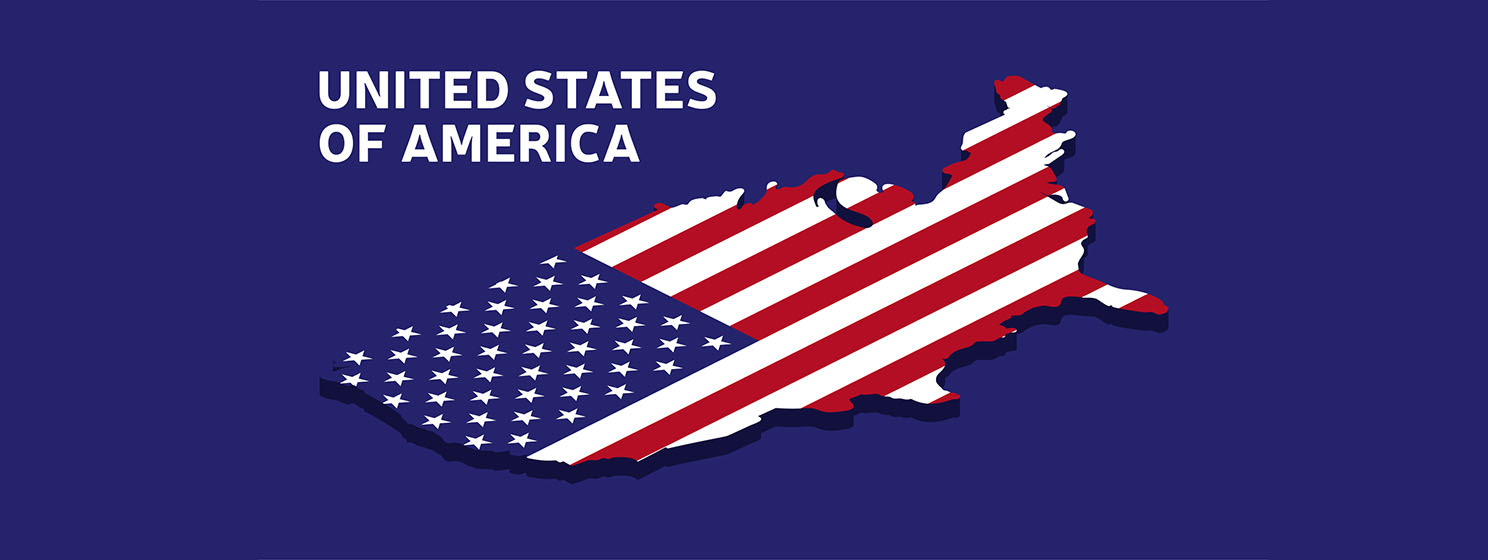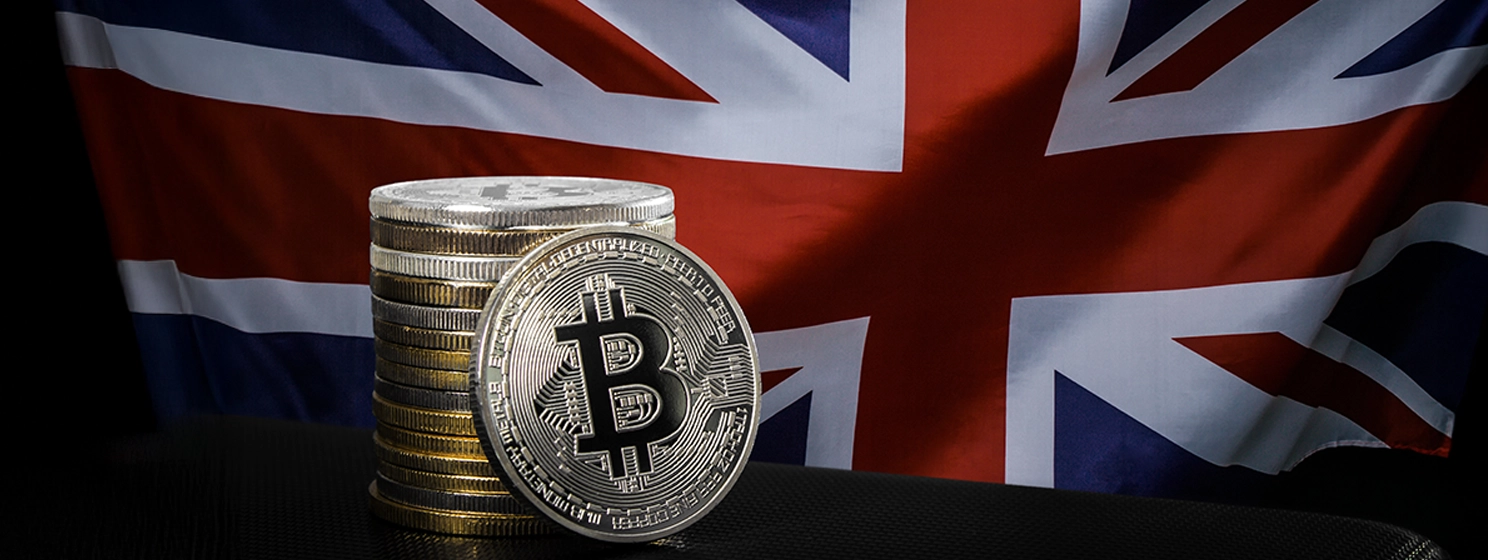|
Getting your Trinity Audio player ready...
|
The United States Congress continues to push President Trump’s crypto agenda with two House Committee hearings on April 9 under the title “American Innovation and the Future of Digital Assets.”
In the first of the hearings, the House Committee on Financial Services heard from industry witnesses on the state of U.S. securities laws and how digital asset should be accounted for in the regulation. Later in the day, in the slightly less legislation-focused of the two hearings, the House Committee on Agriculture heard testimony from several businesses and entrepreneurs working with blockchain to solve real-world problems.
The timing of the hearings—and their shared heading—are part of a coordinated effort by leading Republicans in Congress to progress digital asset policy in the U.S. This was outlined by Rep. French Hill (R-AR) and Glenn Thompson (R-PA)—who Chair the House Committee on Financial Services and House Committee on Agriculture, respectively—when they outlined their six principles for digital asset market structure legislation in an April 4 op-ed.
In the op-ed, they laid out the case for creating clear rules and legislation to protect and foster digital asset innovation.
In Wednesday’s first hearing, fellow Republican Bryan Steil (R-WI), chair of the Digital Assets, Financial Technology, and Artificial Intelligence Subcommittee, kicked off the day’s events by praising the op-ed and reiterating the need for regulatory clarity.
Aligning the US securities laws for the digital age
“As digital assets and blockchain technology gained prominence, the Biden-Harris administration’s hostile approach drove the digital asset ecosystem to jurisdictions with already established frameworks,” said Steil in his opening remarks.
He added, “Now we have an opportunity to correct course and make the United States the epicenter of this ecosystem.”
Rep. Steil argued that advancing stablecoin legislation was the first step in this course correction journey, which was achieved recently with the progression of the House STABLE Act and the Senate GENIUS Act. The next step, said Steil, is “advancing the second half of this agenda: comprehensive digital asset market structure legislation.”
This was the subject of the hearing, titled “American Innovation and the Future of Digital Assets Aligning the U.S. Securities Laws for the Digital Age.” Specifically, it aimed to examine the legal uncertainty surrounding the application of U.S. securities laws to digital assets, which digital assets are implicated by current laws, why current regulations may not apply to others, and how Congress can take legislative action to address these challenges.
“It is crucial for this Committee to enact legislation that provides clear guidelines for issuers and market participants, facilitates capital formation, and maintains the integrity of both the digital asset ecosystem and the traditional financial system,” said Steil. “Through this process, we must ensure that American innovators and entrepreneurs can thrive here at home.”
After delivering his opening sermon, the chairman introduced the witnesses for the day’s event, one of whom was Rodrigo Seira, Special Counsel at international law firm Cooley LLP, who echoed concerns raised by the subcommittee chair.
“It is clear that the current securities regulatory framework is not a viable option to regulate crypto and fails to achieve its stated policy goals,” said Seira. “A predictable framework will protect users by requiring appropriate disclosures and consumer protections while ensuring that companies can innovate without the constant fear of arbitrary enforcement actions.”
Seira acknowledged that digital asset promoters raising capital for a new enterprise should be subject to federal securities laws but explained how they are struggling to comply.
“In practice… virtually no crypto projects have successfully registered their tokens under federal securities laws and lived to tell the tale,” he said. “Projects that tried to comply with the SEC’s [Securities and Exchange Commission] current regulatory requirements expended significant resources and effort only to fail or survive in a state of regulatory uncertainty.”
Seira’s frustrations dealing with the Securities and Exchange Commission (SEC) were reiterated during the hearing by Rep. Troy Downing (R-MT), who stated that “the SEC under former Chairman Gary Gensler pursued an aggressive enforcement regulatory agenda that sought to extend the SEC’s authority over the entirety of the digital asset ecosystem.”
He added that “treating every digital asset as a security regardless of its purpose risks the United States forfeiting its leadership in financial technology.”
Gensler retired from his position when President Trump took office in January. He was replaced on an interim basis by Acting Chair Mark Uyeda, who is known to have a more friendly disposition to the digital asset space. Uyeda has since ushered in a host of changes, including the launch of a Crypto Task Force “dedicated to developing a comprehensive and clear regulatory framework for crypto assets”; announcing that certain stablecoins are not securities; and putting some negative staff statements related to digital asset risk under review.
This changing of the guard and approach at the SEC has not gone unnoticed by industry advocates, but some believe further change is needed, not least witness Tiffany Smith, Partner and Co-Chair of the Blockchain & Cryptocurrency Working Group at law firm WilmerHale.
“While the Securities and Exchange Commission (“SEC”) has taken steps within its jurisdiction to provide regulatory clarity, these actions alone are not sufficient. I believe that Congressional action is necessary to have true regulatory clarity for the digital assets industry,” said Smith.
She underscored the urgency of this point by suggesting that “the current lack of regulatory clarity has caused harm to both crypto-native and traditional financial services firms… Many traditional financial services firms, which are heavily regulated, have decided not to offer digital asset products or services altogether because of this regulatory uncertainty.”
Rep. Hill, Chairman of the House Committee on Financial Service—and co-author of the op-ed mentioned in Steil’s opening remarks—was very much in agreement when it comes to regulatory certainty:
“Last week, this Committee took an important step toward delivering real legislative certainty for payment stablecoins by advancing the STABLE Act. It is incumbent on us to build on that momentum and continue working toward a comprehensive regulatory framework that establishes clear rules of the road for digital asset markets.”
In keeping with the general tenor of the digital asset regulation debate, Republicans on the Committee agreed about the need for regulatory certainty that protects innovation, leaving it to Committee Democrats to argue the pro-enforcement and consumer protection angle.
One point of contention of Wednesday was Democrat concerns over the Department of Justice’s (DOJ) recent move to disband its digital asset litigation division. On April 8, Reuters reported that it had seen a staff memo from Deputy Attorney General Todd Blanche saying that the DOJ is “not a digital assets regulator”—the same Todd Blanche who was once Trump’s defense attorney.
During Wednesday’s hearing, Rep. Sylvia Garcia (D-TX) pushed back on Blanche’s interpretation of the DOJ’s role, saying, “Well, if they’re not, then who is, and what does that leave?”
Garcia also pointed, with concern, to the SEC’s move to drop several digital asset-related cases. This was also picked up by one of the witnesses, Alexandra Thornton, Senior Director at public policy research and advocacy organization The Center for American Progress.
“The influence of the crypto industry is sweeping across the Trump administration. The SEC has dropped enforcement actions against crypto firms. The CFPB [Consumer Financial Protection Bureau], which likely would have overseen payment systems for digital platforms, has been kneecapped. Trump’s Department of Housing and Urban Development has proposed incorporating cryptocurrency and blockchain into routine spending and accounting practices, and President Trump has called for the establishment of a crypto reserve at the Treasury Department.”
She added that “all of these risks and uncertainties today would counsel a much more cautious approach to adoption of a regulatory regime for an industry plagued by scams, theft, and hacks.”
Thornton was the most prominent voice of caution amongst the witnesses, with the others largely favoring the Republican-led pro-innovation approach to regulatory clarity.
However, the Hearing didn’t only focus on the problems faced by the digital asset industry. It also covered some of the opportunities it presents.
“Digital assets are going to open the door to endless possibilities for anyone in both financial, and candidly, non-financial services, and provide possibilities for economic growth domestically produced right here in the U.S.,” said Rep. Zach Nunn (R-IA).This assertion was backed up by witness Jake Werrett, Chief Legal Officer of digital asset firm Polygon, who stated:
“In recent years, blockchains have emerged as one of the most transformative architectures of the Internet… What began as a monetary innovation has become a foundation for decentralizing all forms of native digital assets, shifting control over information, ownership, and privacy back to individuals.”
This sentiment, focusing on what blockchain can provide beyond a simple store of value, led smoothly into the day’s second hearing.
On-chain tools for an off-chain world
In a somewhat less contentious event, the House Committee on Agriculture’s Subcommittee on Commodity Markets, Digital Assets, and Rural Development met to hear from witnesses about the real-world application of blockchain technology—in order to underscore the need for ‘innovation protecting’ regulation.
Subcommittee Chairman Dusty Johnson (R-SD) delivered the opening statement to the hearing, titled “American Innovation and the Future of Digital Assets: On-Chain Tools for an Off-Chain World,” in which he paid homage to the day’s previous event.
“Earlier today, Chairman Steil’s Digital Asset Subcommittee… held their first hearing on market structure. This was not a coincidence—we’ll be working side by side on legislation again this Congress,” said Johnson. “We are united and committed to advancing comprehensive, bipartisan market structure legislation to the President’s desk.”
He then steered onto the purpose of his hearing, namely, to hear from entrepreneurs who are using blockchains and digital assets to solve real-world problems:
“This conversation isn’t really about crypto, but it’s about a few cattle guys trying to figure out how to make it easier and more profitable for ranchers to market their cattle. It’s about a gifted engineer trying to make a less expensive, more robust, and more precise GPS network for precision agriculture and other location-based systems. It’s about a law professor who is building automated systems to help developers comply with legal disclosure requirements in a way that consumers can actually understand. It’s about new ways to solve old problems, and these new ways use public blockchains.”
One such public blockchain is Ethereum, and witness Bill Hughes, Senior Counsel and Director of Global Regulatory Matters at Ethereum blockchain software company Consensys told the subcommittee how applications on his company’s blockchain of choice are helping to solve real-world problems.
“Blockchain applications are much more diverse than finance. Developers are creating apps with commercial and social applications,” said Hughes. “Other applications focus on building out physical networks by incentivizing people to build and maintain network infrastructure. Yet others are delving into the world of artificial intelligence, both by changing how AI models work and by improving how we use them. Some projects aim at solving tricky problems while preserving privacy, including how we can fight deep fakes so we can begin to trust information we get over the internet.”
He added, “Those in this space are heartened by bipartisan interest in the technology and the growing familiarity among the ranks of Congress.”
Hughes, who is also a member of the board of directors of the Blockchain Association, a non-profit trade association, concluded by offering his two cents on the hearing’s underlying motivator, regulation:
“Durable clarity on the law is what we need today to ensure we can capture the opportunities presented by blockchain technology. What we can build is limited only by our imagination and the law.”
Another witness, Mark Tague, is a fourth-generation rancher whose family has stewarded the same land in Oklahoma for over a century. He is also the co-founder and chief revenue officer of CattleProof Verified, a USDA-approved Process Verified Program provider that leverages blockchain technology to digitize livestock and related assets, “delivering greater transparency, traceability, and efficiency to the agricultural commodity system.”
Tague detailed the somewhat more tangible benefits of blockchain to the agriculture sector.
“Blockchain technology offers a transformative solution to the long-standing issues plaguing the cattle industry…In the context of cattle transactions, blockchain enables the creation of unique digital identities for individual animals, allowing for the recording and tracking of crucial data points such as origin, health records, and ownership throughout their lifespan,” explained Tague.
He added that “this comprehensive data trail can follow the animal through the entire supply chain, from ranch to consumer, providing an unprecedented level of transparency and accountability. The ability to tokenize these digital animal identities and their associated data also paves the way for more efficient and secure online marketplaces for buying and selling cattle. The adoption of blockchain technology presents numerous benefits for ranchers of all sizes.”
Blockchain’s utility in supply chain traceability and management has been well reported, and increasing numbers of successful projects around the globe are demonstrating how the technology can benefit an area riddled with archaic and outdated systems.
In the agriculture sector alone, this includes projects such as Carnes Validadas in Argentina, which launched in 2019 and created a method to guarantee traceability throughout the beef supply chain, “from genealogy to the consumer,” using blockchain technology. In Brazil, one of the world’s top suppliers of agricultural products, the joint venture Covantis uses blockchain technology to streamline logistics.
According to Tague, these kinds of project offer significant advantages for both producers and consumers in the U.S., as he summed up in his remarks.
“By addressing the long-standing challenges of inefficient and opaque traditional transaction methods, blockchain offers a pathway towards a more transparent, efficient, and trustworthy beef supply chain,” he said. “Ranchers, regardless of their size, stand to benefit from premium pricing, faster payments, reduced administrative burdens, and potentially broader market access. Simultaneously, the American beef-buying population will gain greater confidence in the safety and origin of their food through enhanced traceability and verifiable information.”
This glowing account of the benefits of blockchain to agriculture was echoed by fellow witness Mike Horton, Project Creator at GEODNET Foundation, a company that offers blockchain-based satellite position services.
Horton explained how blockchain technology allows GEODNET to provide farmers with “the reliable high-accuracy positioning needed to conduct precision agriculture farm practices as well as the precision required by many robotics and drone systems,” but more affordably than centralized solutions.
He suggested that the innovative funding models and economies of blockchain technology allow for companies such as GEODNET to offer these precision agriculture solutions to small farmers, where previously they would be the luxury of large industrial farming operations.
However, he also felt the need to touch on the day’s overarching theme, warning that “while we have been successful, it is imperative that future innovators have absolute clarity around how digital assets are to be regulated. A lack of clarity stifles innovation and discourages investment in the U.S.”
This sentiment was also a major feature of Dr. Chris Brummer’s speech to the subcommittee. Brummer is a Sesquicentennial professor of Financial Technology at Georgetown University Law Center and CEO of digital asset declaration service Bluprynt, and he cautioned against a lack of clear rulemaking.
“Inaction weighs down the system. Risks multiply. Innovation slows. And when the inevitable reckoning comes, the cleanup is far more disruptive than thoughtful, incremental reform would have been,” he said. “We’ve seen that debt balloon in recent years—especially in crypto, where sometimes the absence of a single new rule or proposal has left an entire sector navigating in the dark.”
Brummer concluded by saying that “the reality is that innovation doesn’t wait… The question is whether our regulatory frameworks will move with them. Because in the end, it’s not innovation that creates risk—it’s the refusal to meet it with clarity, creativity, and courage.”
The final witness was Coy Garrison, Partner at international law firm Steptoe, whose testimony also focused on the regulatory side of things, on which he made his feelings very clear.
“Passing digital asset market structure legislation is essential to promote American innovation in blockchain technology. The status quo is unacceptable,” said Garrison. “In addition to bringing regulatory clarity and customer protection benefits to the marketplace, market structure legislation is likely to encourage American innovation in blockchain technology.”
This was the overarching message of the Republican-led day of hearings, clearly aimed at uniting support behind a pro-innovation market structure framework for digital assets. Both subcommittee hearings doubled down on this goal, with the House Committee on Financial Services hearing revolving around the need for regulatory and securities law clarity in any market structure legislation, while the Committee on Agriculture’s hearing attempted to put into the spotlight the people and business that would be affected by such a framework.
This is something Chairman Johnson of the latter Committee was keen to emphasise, and he rounded off his comments by saying that “our work on market structure legislation is ultimately about how to ensure that ranchers, engineers, college professors, and others can use digital tools to bring their ideas to life and unleash their American Dream.”
Watch: Breaking down solutions to blockchain regulation hurdles

 12-20-2025
12-20-2025 




